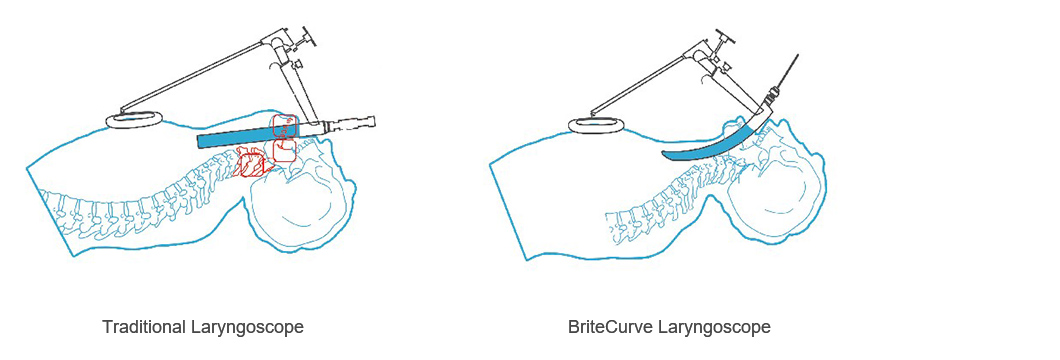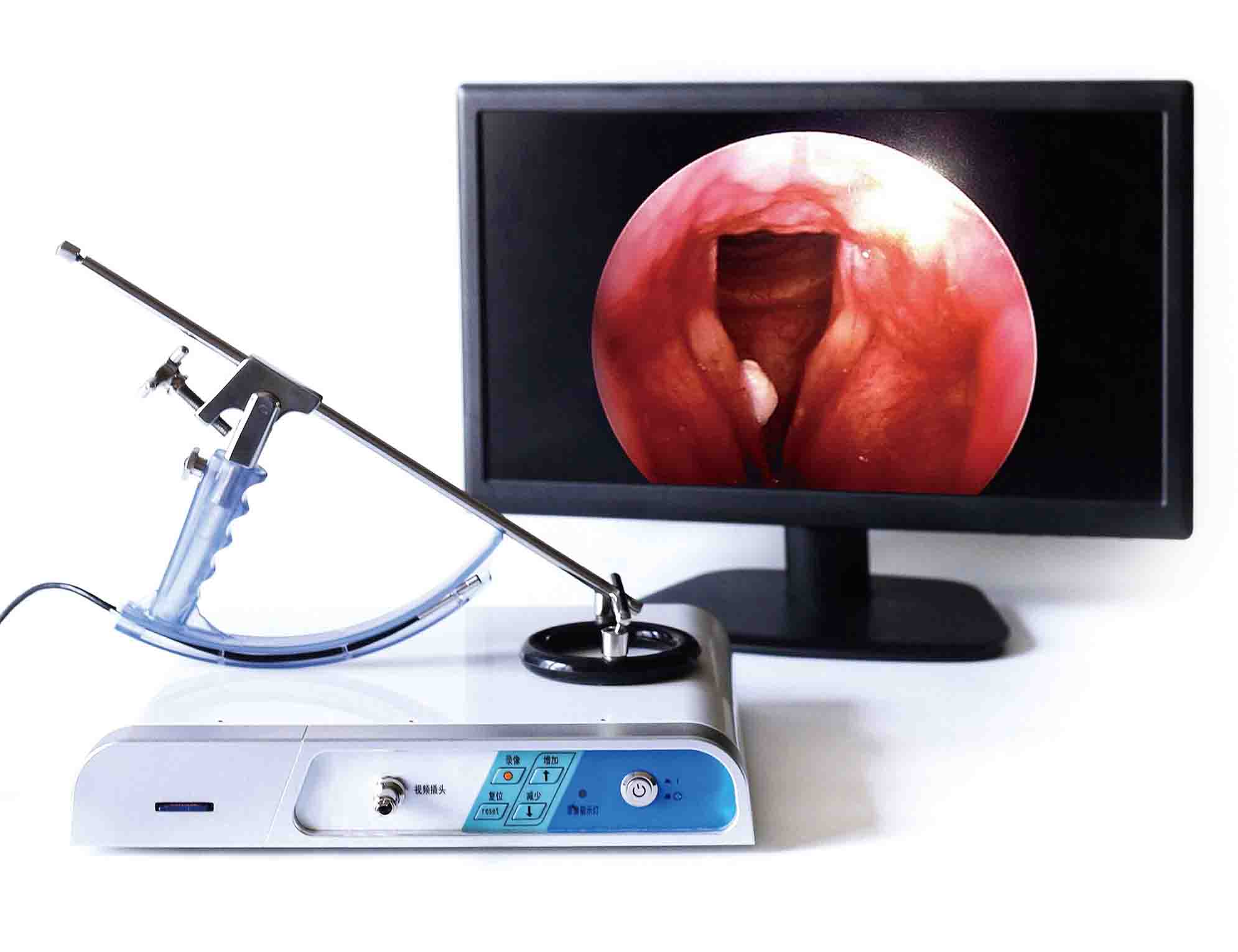What is the Video Self-retaining Laryngoscope?
Video laryngoscopy is a form of indirect laryngoscopy in which the physician does not directly inspect the larynx. Instead, the larynx is visualized with a digital laryngoscope (a camera with a light source) inserted transnasally (through the nose) or transorally (through the mouth).
What’s the advantages comparing with traditional laryngoscope?
Traditional laryngoscope requires the patient 's mouth, throat and larynx to be extremely overextended at three points and one line. Laryngoscope has an overpressure effect on the incisors, tongue roots, zygomatic arch, posterior pharyngeal wall and cervical vertebrae. In order to fully expose the throat, the force acting on the tooth is close to 19 kg, the force acting on the chest is 4.3ka, so the sum of the pressure on the teeth and the chest is up to 23.3 kg.

Indications
Adult patients with laryngopharyngeal diseases and difficult airway intubation surgery. To be used and operated by physicians.
Features
1. Multiple functions:
It has the functions of real-time video, instant photo taking, video recording, photo playback, video playback and file transfer.
2. Clear camera resolution: 1280 * 720 pixels
3. Ergonomic design and easy to operation:
The throat bracket radian is designed according to ergonomic, easy to insert to the throat without obstruction.
4. Strict sterile disposable packaging.
5. Technical parameters:
Maximum field angle ≥ 60 degrees. Endoscope cable length: ≥ 2m.
Light intensity adjustable and maximum illumination ≥ 100lux.
Displayer: 22 inches. Resolution 1920 * 1080 pixels.
6. Safety performance:
All items meet the requirements of GB9706.1-2007 and GB9706.15-2008. Electromagnetic compatibility meets the requirements of YY050-2012. Safety classification belongs to class I equipment, BF application part, IPX6, non AP / APG type.
Contraindications
1. No absolute contraindication relating directly to the product are currently known.
2. Relative contraindications: For the patients with acute upper respiratory tract inflammation accompanied with dyspnea, patients with severe cardiopulmonary lesions, patients allergic to dicaine, and patients with unexplained severe laryngeal obstruction can be considered as relative contraindications. For such patients, please check with the physicians before use this product.






